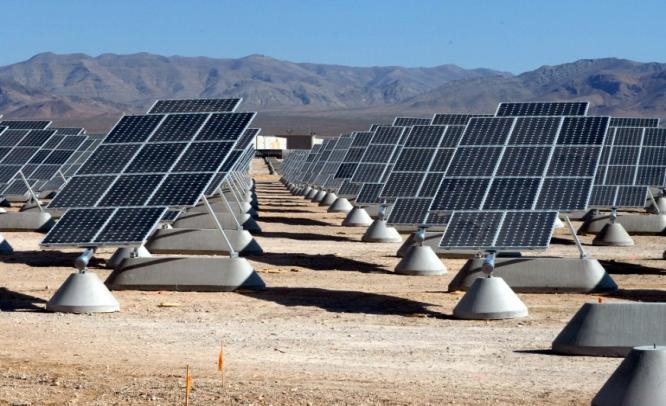The Supreme Energy Council is trying to reduce Dubai’s dependence on oil and gas, the gulf state aims to produce one percent of its energy needs using solar power by 2020 and five percent by 2030.
24th October 2013
Dubai inaugurated the first phase of a solar energy park on Tuesday and plans to build the second one to diversify energy supply in the United Arab Emirates, the Gulf country is an OPEC member having 6 percent of global oil reserves. The park, named as the “Mohammed bin Rashid al-Maktoum Park” after the emirate’s ruler, will produce 1,000 megawatts of electricity when completed and will cost 12 billion dirhams ($ 3.3 billion). The first plant of the solar energy mega project is 30 kilometres (18 miles) from the city of Dubai and can produce 10 mega watts of energy on its own.
Mohammed Saeed Al Tayer, CEO of Dubai Electricity and Water Authority (DEWA) said “This is the first part of Dubai’s plan to develop a solar park with 1,000 megawatts of power by 2030”. DEWA also plans to invite private participants in its next project, which is aimed to generate 100 mw, it plans to hold 51 percent stake in the project. Mohammed Saeed Al Tayer, who is also the vice chief of the Supreme Energy Council, said the project was “one of a kind” in the region,” adding that it would be a major boost to the Gulf state’s mega projects. “For the first time, we are harnessing the sun to power growth and prosperity in the Emirate, which is a significant achievement,” he said.
The Supreme Energy Council is trying to reduce Dubai’s dependence on oil and gas, the gulf state aims to produce one percent of its energy needs using solar power by 2020 and five percent by 2030, local news agencies reported.
Largest Photovoltaic Facility
The plant would be the region’s largest photovoltaic facility; with the construction being completed in less than 30 weeks. The project will be executed by First Solar, selected by DEWA, which will provide engineering, procurement and construction services. The project will be powered by 152,880 First Solar FS series – 3 black modules and generate 24 million kilowatt hours (KWh) of electricity per year. The electricity generated by the power plant, on an average, will displace approximately 15,000 metric tons of CO2 annually. The plant covers an area of 59 acres or 238, 764 square metres and is designed to operate for 25 years.
Major Electricity Consumer
In spite of a population of just over two million, Dubai is a major electricity consumer, partly because of the extreme heat from June to September, which sees an increased use of the coolers and air conditioners. The UAE, made up of seven states, including Dubai produces 97.8 billion barrels of oil every year, 95 percent of it is owned by the Emirate of Abu Dhabi.
Top 10 Countries Using Solar Power in the World (As on 2012)
| Ranking | Country | Mega Watts (MW) |
| 1 | Germany | 7,630 MW |
| 2 | China | 4,950 MW |
| 3 | Italy | 4,223 MW |
| 4 | USA | 3,282 MW |
| 5 | Japan | 1,790 MW |
| 6 | India | 1,427 MW |
| 7 | France | 1,012 MW |
| 8 | Australia | 993 MW |
| 9 | Bulgaria | 933 MW |
| 10 | UK | 817 MW |
Prediction for Top 10 Solar Countries in 2014 (Source: Renew Economy)
| Ranking | Country | Mega Watts (MW) |
| 1 | China | 10, 640 MW |
| 2 | USA | 6,203 MW |
| 3 | Japan | 4,731 MW |
| 4 | Germany | 3,682 MW |
| 5 | India | 2,288 MW |
| 6 | Italy | 1,985 MW |
| 7 | UK | 1,856 MW |
| 8 | Australia | 1,401 MW |
| 9 | Canada | 1,219 MW |
| 10 | Chile | 1,895 MW |


